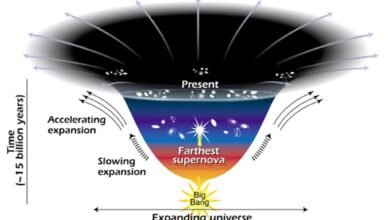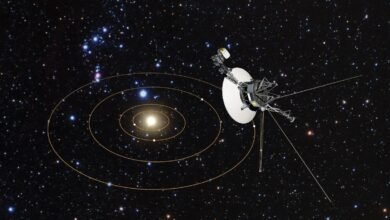
Today, supermassive black holes and their host galaxies tell a specific story in terms of mass. But JWST reveals a different story early on.
At the center of practically every galaxy today isn’t just a collection of stars, gas, and dust, but a monster behemoth: a supermassive black hole. Ranging from millions to billions of solar masses, these cosmic monstrosities are responsible for some of the most violent, energetic events in the known Universe.
- When a star or other massive object passes too close to one, the black hole’s gravity can violently tear it apart: a tidal disruption event.
- When gas or other matter gets accreted around that black hole, the acceleration of that matter produces jets of radiation and particles: an active galactic nucleus, blazar, or quasar, depending on how we view it.
- And when another black hole merges with a supermassive one, it generates incredibly energetic gravitational waves: perhaps the most energetic events in all the cosmos.
Today, even the most massive of the known black holes represent only about 0.1% of the stellar mass of the galaxy: just one-thousandth of the amount of mass found by summing up all the stars in the galactic environment surrounding it. For a long time, astronomers have wondered just how these supermassive black holes came to be: did they form from earlier generations of stars, or was something else needed to explain them? With a large suite of new data now available owing to the advent of JWST, the answer now seems certain: stars, alone, can’t explain these black holes. Here’s the evidence that leads us to that conclusion.
The first thing we have to understand is that there are two main ways that black holes can grow:
- by the steady, gradual accretion and infall of matter, such as gas,
- and by individual events such as mergers and the swallowing of massive objects, such as stars, stellar remnants, and other black holes.
Source link






